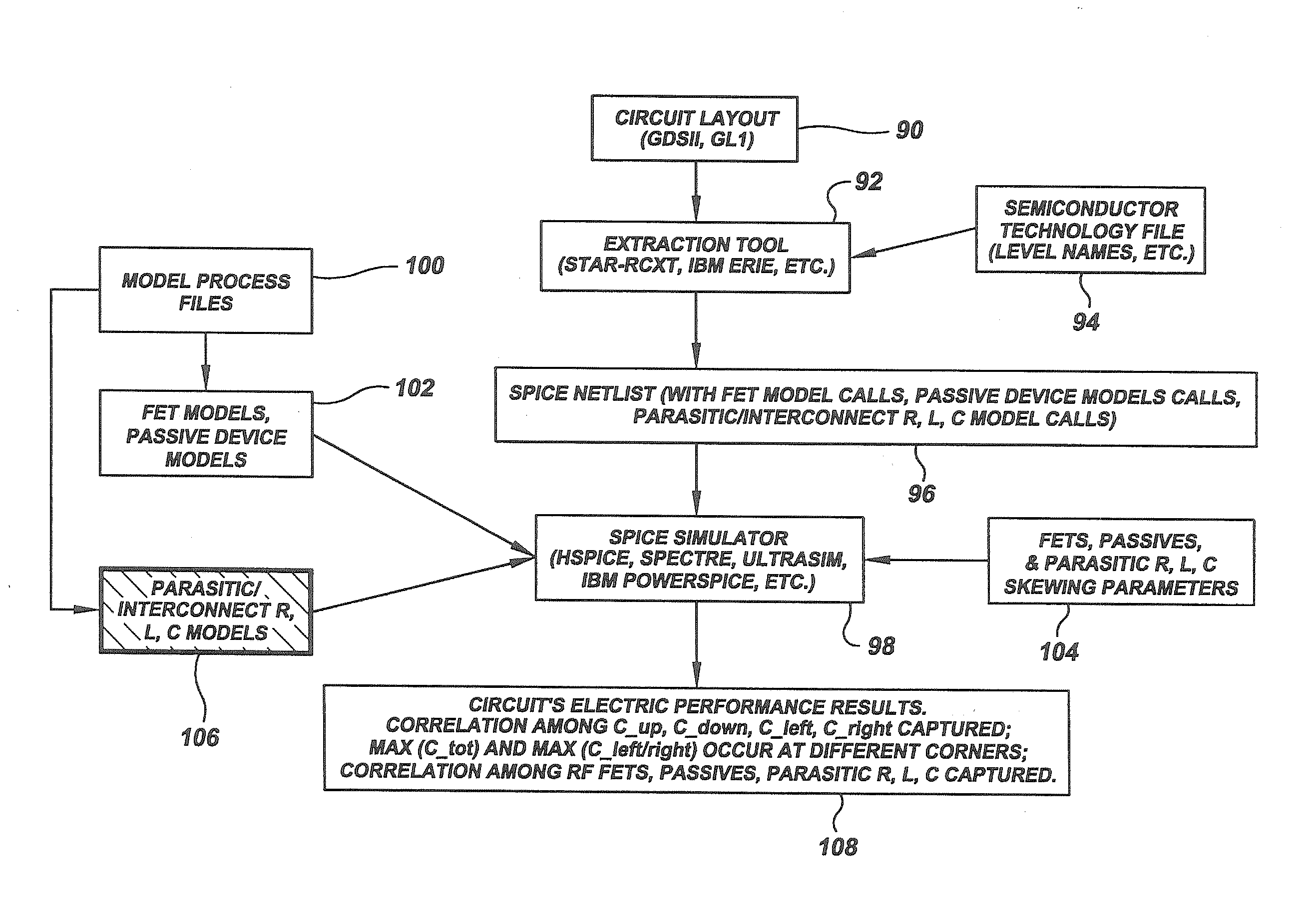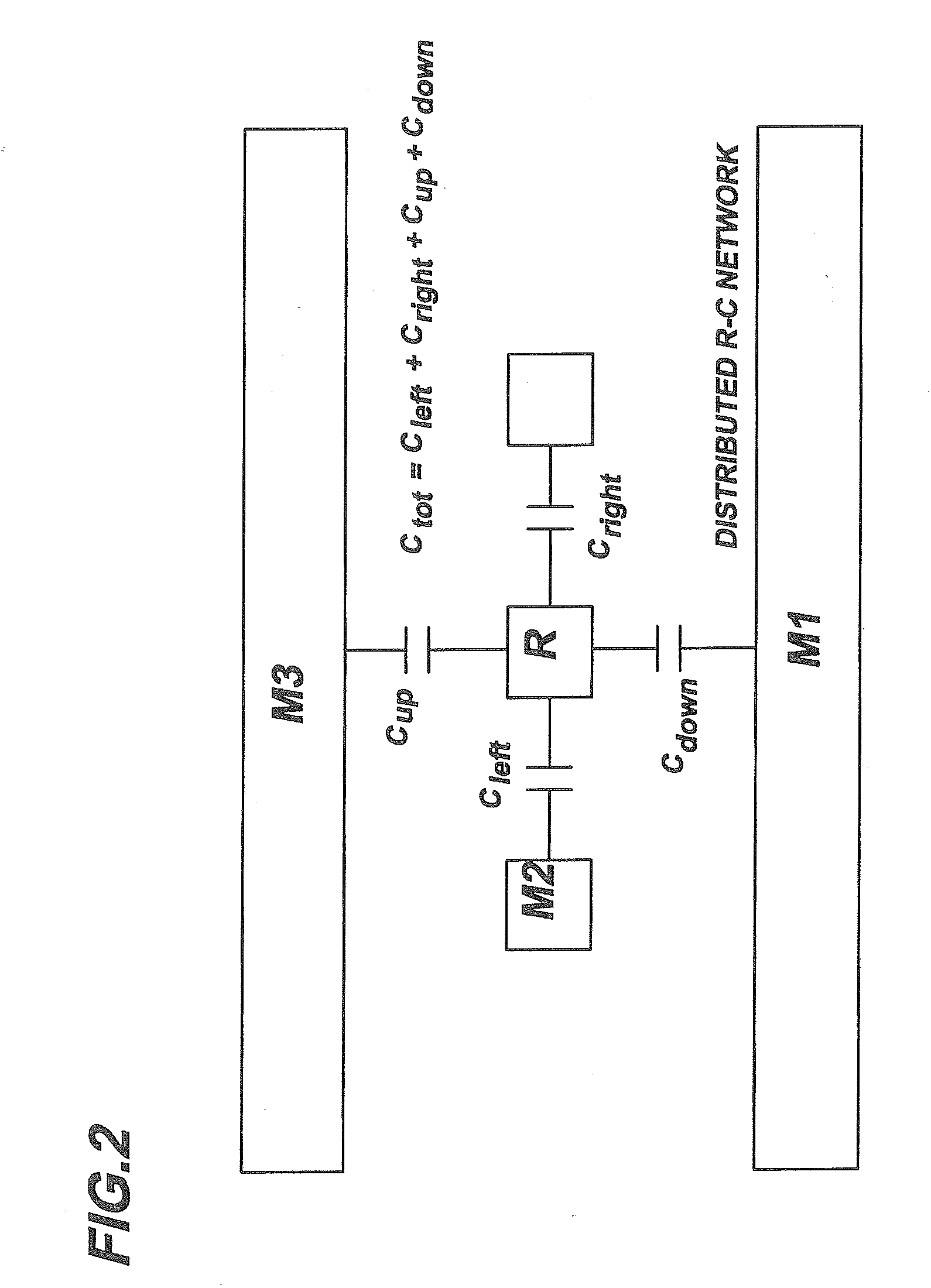Method for treating parasitic resistance, capacitance, and inductance in the design flow of integrated circuit extraction, simulations, and analyses
a semiconductor device and design flow technology, applied in the field of methods for calculating parasitic resistance, capacitance and inductance in the design flow of integrated circuits, can solve problems such as unanticipated and unwanted delays, functional failures, and inability to accurately model or calcula
- Summary
- Abstract
- Description
- Claims
- Application Information
AI Technical Summary
Benefits of technology
Problems solved by technology
Method used
Image
Examples
Embodiment Construction
)
[0029]In describing the preferred embodiment of the present invention, reference will be made herein to FIGS. 1-9 of the drawings in which like numerals refer to like features of the invention.
[0030]FIG. 1 depicts a two-dimensional model 10 of the present invention simulating wire parasitic capacitance and resistance. Two current carrying, parallel metal signal or interconnect lines M1 and M3 are shown a distance hA and hB, respectively, from three interconnect lines M2, which are perpendicular to the direction and layout of M1 and M3 (shown in the figure as going through the page). The interconnect lines have a known width w and height or thickness t, and are placed a distance s1 from the (first) neighboring wire on the left, and a distance sr from the (first) neighboring wire on the right. The resistance of M2 is at a minimum when the width w and thickness t are maximized. Under this condition, the line-to-line coupling capacitance, CM2-M2 (including both Cleft, and Cright), the ...
PUM
 Login to View More
Login to View More Abstract
Description
Claims
Application Information
 Login to View More
Login to View More - R&D
- Intellectual Property
- Life Sciences
- Materials
- Tech Scout
- Unparalleled Data Quality
- Higher Quality Content
- 60% Fewer Hallucinations
Browse by: Latest US Patents, China's latest patents, Technical Efficacy Thesaurus, Application Domain, Technology Topic, Popular Technical Reports.
© 2025 PatSnap. All rights reserved.Legal|Privacy policy|Modern Slavery Act Transparency Statement|Sitemap|About US| Contact US: help@patsnap.com



